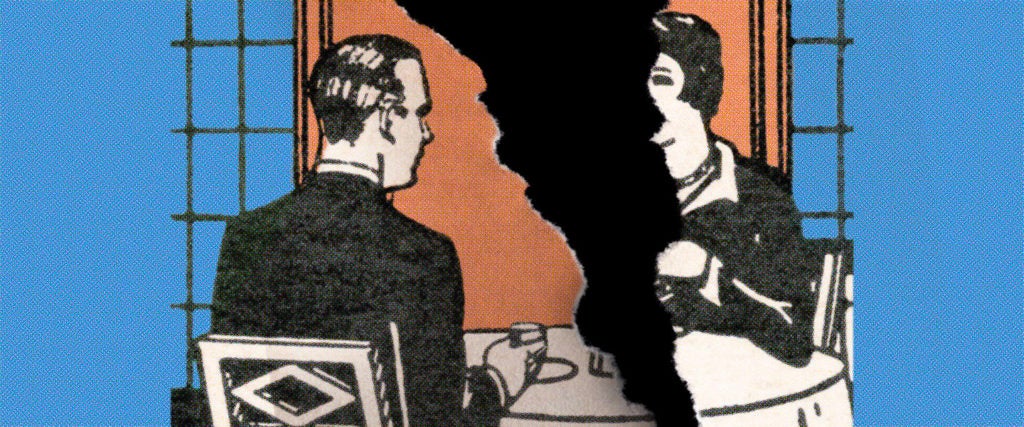Twenty years ago, Stella, a 39-year-old freelancer in California, was celebrating her one-year anniversary with her boyfriend, who we’ll call Steve. Being in their late teens in the early aughts, Steve drove the pair to Joe’s Crab Shack. “If you’re not familiar,” she explains, “it’s the kind of family restaurant that serves a bunch of greasy fried fish and the servers celebrate diners’ birthdays with choreographed dancing and singing.”
Stella ordered crab legs, a favorite dish but a finicky one that takes a long time to finish. To her horror, shortly after the entree arrived, Steve said he didn’t want to date her anymore. “I was shocked, because there was no real prior indication we were heading toward a breakup,” she continues. “I also felt a little tricked, because we were supposed to be celebrating.”
Stella says her stomach dropped, but she forced herself through the painfully slow crab legs anyway. She didn’t try to argue or convince Steve that they should stay together, so they ate dinner in frosty silence. To make matters worse, when it was finally time to get the check, Stella’s agony was prolonged because the servers were preoccupied, singing and dancing around other tables. “It was a very awkward dinner,” she concludes. “It’s definitely one of the worst, if not the worst, breakups I’ve ever experienced.”
Stella’s dumping was an excruciating, real-life version of a scene famous in the pop-culture archives — the awkward restaurant breakup. Clichéd enough to warrant its own entry on TV Tropes, the breakup dinner has been a staple of popular entertainment for so long that, even in the 1970s, it was a trope well-worn enough to be parodied. Despite being so stale, it’s continued to be rolled out in the decades since: in films like Legally Blonde (2001), The Social Network (2010) and The Five-Year Engagement (2012); and on TV shows like Seinfeld (1997), The Office (2009) and Happy Endings (2012).
But do people actually break up like this in real life? Obviously poor Stella did, but the restaurant breakup seems to be like the baseball sex analogy: It occurs so often in pop culture that it bleeds into real life, rather than the other way around. The whole scenario is calculated to make for good TV, but in reality, restaurants are terrible venues for ending relationships: You’re in public, servers are frequently interrupting and neither of you are free to fully express your emotions.
Of course, the assumed inability of the dumpee to scream and sob is the whole point, and the reason screenwriters love this set-up. Inevitably, the person being dumped makes a scene anyway, creating a cinematic spectacle that shocks onlookers and delights audiences. And that person is invariably a woman. The trope rests on gendered assumptions, namely that women are likely to respond hysterically to the news of a breakup and rarely be the ones to initiate it. It’s the old “women are emotional and men are rational” stereotype, combined with the stereotype that women are clingy and desperate for committed relationships whereas men don’t want to be “tied down.”
Obviously, real life is much more complicated. Men are actually at least as likely to be dumped by women, and at any rate, people usually want breakups to be as respectful as possible. Even if you do want to take the cowardly route of foreclosing a display of emotion, you can easily dump your partner by text now — there’s no need to fork out $200 for dinner at a nice restaurant.
Unsurprisingly, Stella cautions people not to opt for this breakup venue. “I don’t think it’s very kind,” she says, explaining that if you absolutely must dump someone over a meal, you should wait until you’re wrapping up to broach the subject, drive separately so they can get away from you immediately and have the decency to pick up the whole check — it’s the least you can do, she says, given that you’ve just hurt their feelings in public.
Oh, and “maybe don’t do it on your anniversary,” she adds.

